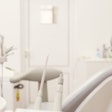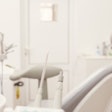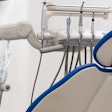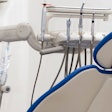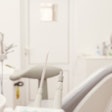
The hemorrhaging of dentists from solo practice to dental service/support organizations (DSOs) doesn't appear to be stopping anytime soon. The number of dentists in solo practices has declined by 11% in the past 10 years, according to a new report from the ADA Health Policy Institute.
In its Annual Dental Industry Report 2020, the institute defined a dental service/support organization (DSO) as a "group practice model that manages the administrative, marketing, and business side of a dental practice on behalf of dentists." This rather limited definition may actually underestimate the number of DSO-affiliated dentists, the authors noted.
"The slow, steady growth of group practices will continue, if not accelerate, in the coming years," wrote the authors, led by Marko Vujicic, PhD, chief economist and vice president of the ADA Health Policy Institute. "Shifting preferences of young professionals, increasing consumerism among patients, and accelerating demographic shifts in the workforce are some of the reasons for this change."
Declining practice ownership
In 2017, about 7% of dentists in the U.S. were affiliated with a DSO, according to ADA data. That percentage jumped to 8.8% in the 2020 report.
At the same time, practice ownership has declined. A total of 83% of dentists owned their practices in 2007, compared with 78% of dentists in 2017.
Previous research from HPI has found that women and nonwhite dentists are more likely to participate in DSOs than white, male dentists. But even today's young, white male dentists are less likely to be owners than their peers 20 years ago, the report authors noted. Rising student debt, increased competition, and desire for work-life balance are just some of the reasons that could be fueling this trend.
However, it's important to note the market share of DSOs varied across the U.S. Southwestern states, namely Arizona, Nevada, and Texas, had a higher share of DSOs than more rural areas, including the states of Alaska, Montana, and Wyoming.
Owners making less over time
Currently, a sharp pay gap exists between dentists who own their practices and those who are employees. General dentists who owned their practice earned almost $69,00 more per year than nonowner dentists.
However, the pay gap between owner and nonowner dentists is decreasing due to a decline in owner dentists' income. Owner dentists made an average income of $210,711 in 2016-2018, compared with $237,553 in 2001-2003.
Meanwhile, income for nonowners has stayed relatively stable. In 2016-2018, nonowner dentists made an average income of $141,768, compared with $144,969 in 2001-2003.
This shrinking pay gap could be because group practices are experiencing a less severe payment decline than solo practice owners, the report authors noted. In the past 15 years, the income gap between practice owners and nonowners decreased by 26%.
"The shrinking gap is largely due to decreased owner incomes, whereas nonowners nearly maintained their average net incomes over time," they wrote.
One reason for this could be that larger organizations, including DSOs, are more adept at managing and profiting in today's complex healthcare environment, they noted.
"Larger group practices with higher market shares are likely to have increased leverage in negotiating payment rates with insurers," the authors wrote. "They are also more likely to leverage economies of scale that would enhance profitability."
In the long run, being a nonowner may become more profitable, especially as millennials continue to age and prefer nontraditional dental care options.
"Millennials place a larger premium on convenience than any other age groups and more readily embrace transparency in cost and quality," the authors wrote. "They are more open to different modes of dental care delivery that emphasize convenience and are more willing to change healthcare providers than other generations."








